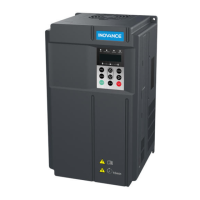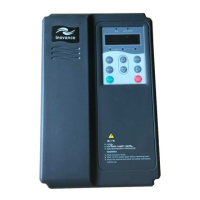Why does Inovance MD280NT3.7GB Inverter display "H&" and stops immediately?
- PParker JohnsonSep 22, 2025
If the AC drive display is normal upon power-on but "H&" is displayed after running and the AC drive stops immediately, the cooling fan is damaged or locked-rotor occurs. Replace the damaged fan.



